We live in a world full of noise such as expectations, pressures, appearances, and uncertainties. […]
Here's my concise notes from Fundamental Analysis to identify great businesses from Adam Khoo's Piranha Profits Online Investment Course. These are some useful concepts that I jotted down while going through the online modules.
A way to identify great business is by analyzing their Financial Statements. I learnt quite a bit of the concepts while preparing for my CFA level 1 exam. To identify great businesses, we need to look at their income statement, balance sheet and statement of cash flows.
Part 1 | Part 2 | Part 3 | Part 4 | Part 5 | Part 6
Useful websites: Reuters, Yahoo Finance, Investing
Income statement
To analyse the financials of a company, you can zoom in on revenue, net income, extraordinary items (one time cost/revenue off that should be removed) at Reuters. Here, I used Microsoft Corporation (data: 17 Sep 2021) as a reference.

We want to look out for a consistent increase in sales revenue, net income, gross profit and net profit margins. Do note that growth companies usually have negative earnings at the start. It would be the best if we can find a company with the highest gross profit and net profit margins in the industry.
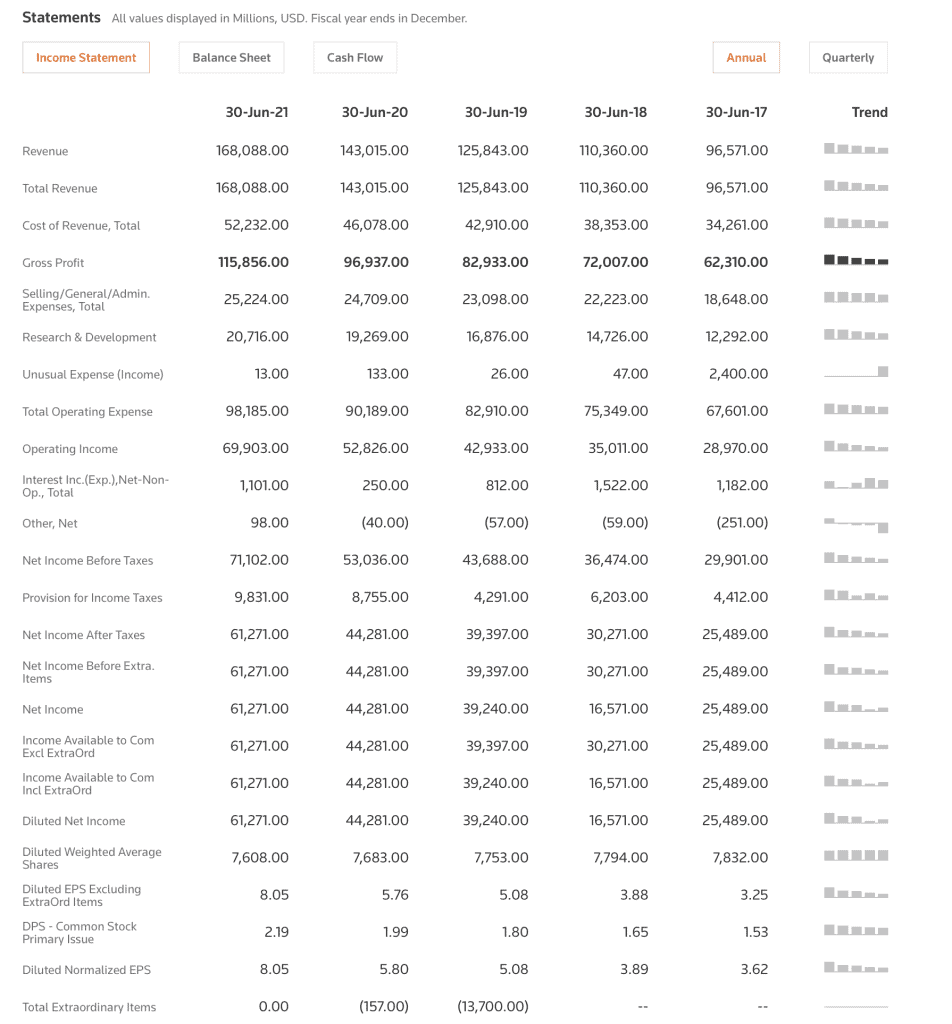
Useful formulas
Gross profit margin = gross profit/sales revenue *100%
If the gross profit margin is 50%, it means that every $1 of sales, the company can keep 50cents
Net margin = net profit/sales revenue *100%
Click on Key Metrics for profits related information
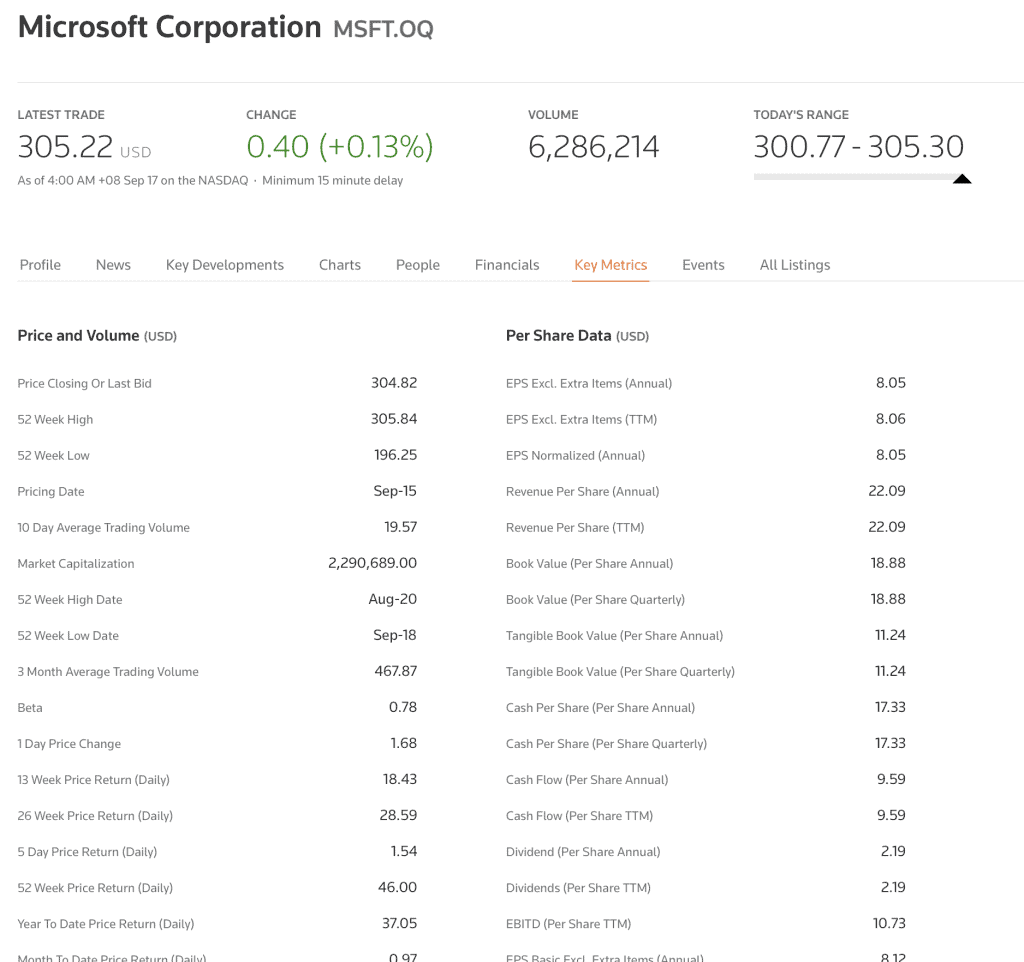
There will be a section on Margins. When you compare Gross margin (TTM) at 68.9% vs Gross Margin (5Y) at 66.79%, there is an improvement. There is an increase in net profit as well.
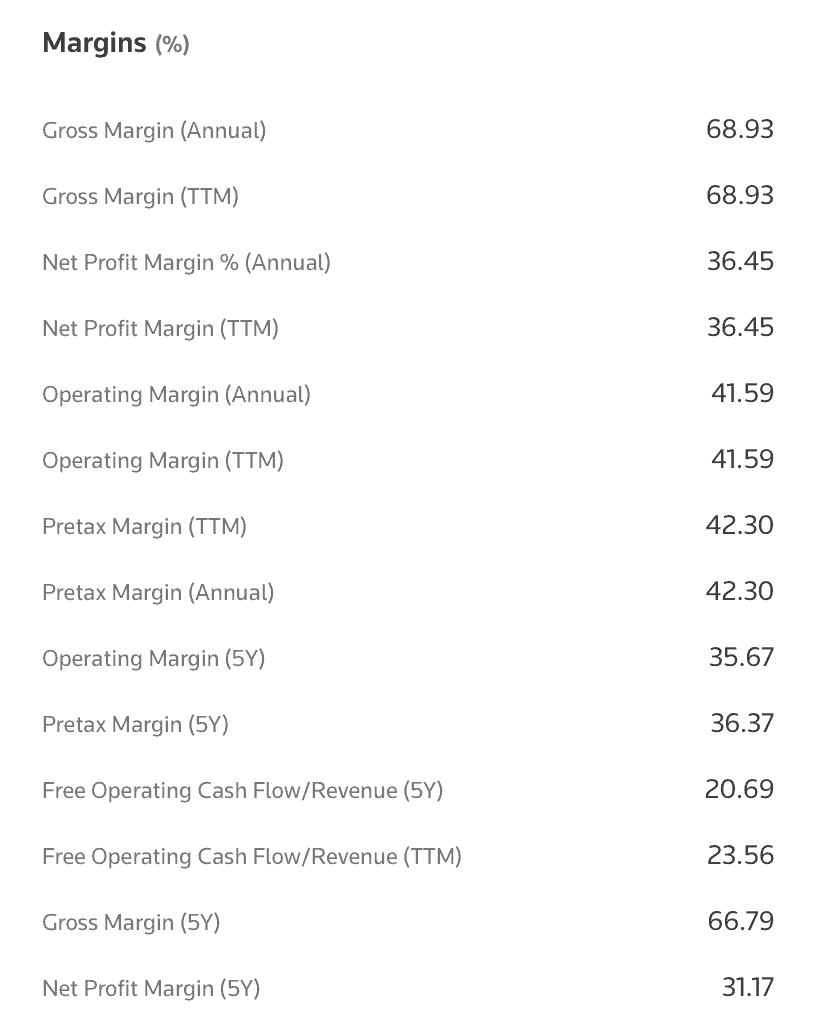
To look at how Microsoft is performing against their competitors, head to Investing.
Head to ratios, after clicking on Financials
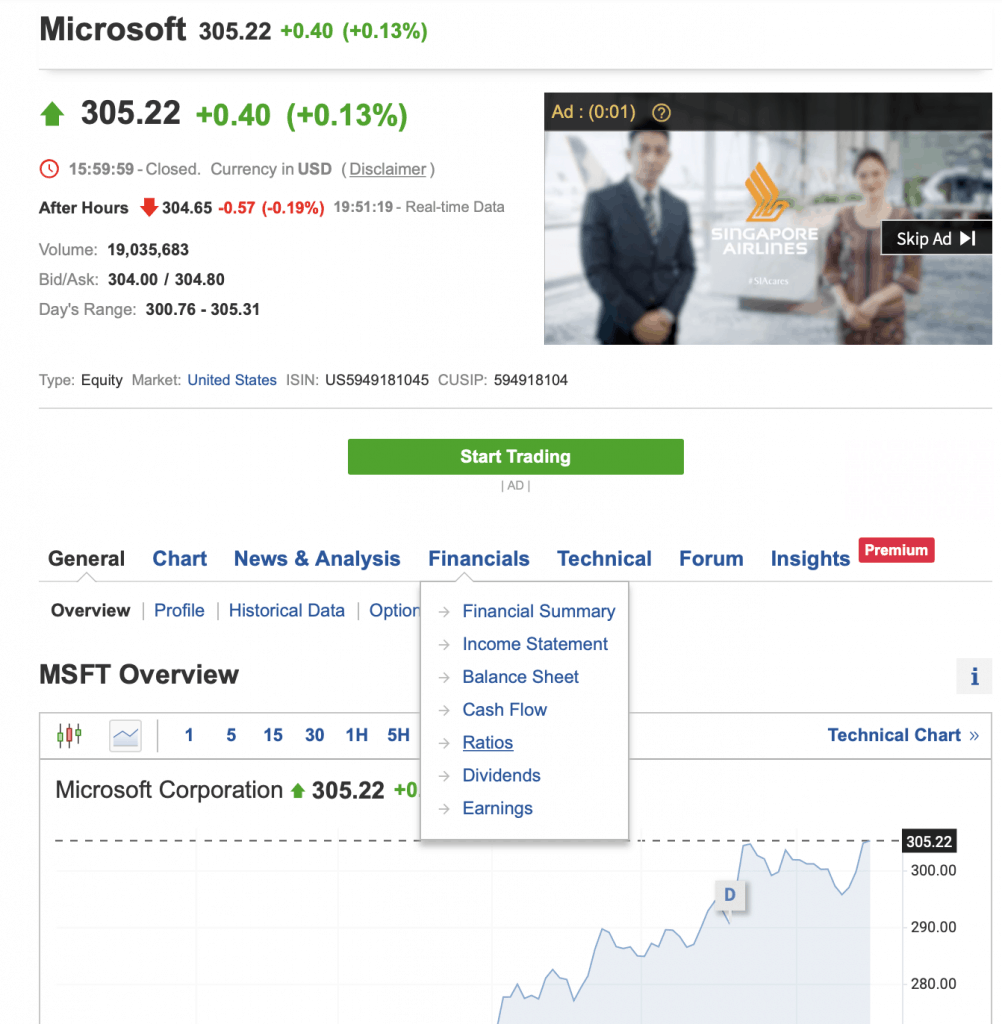
Here, we can see the comparison against the industry
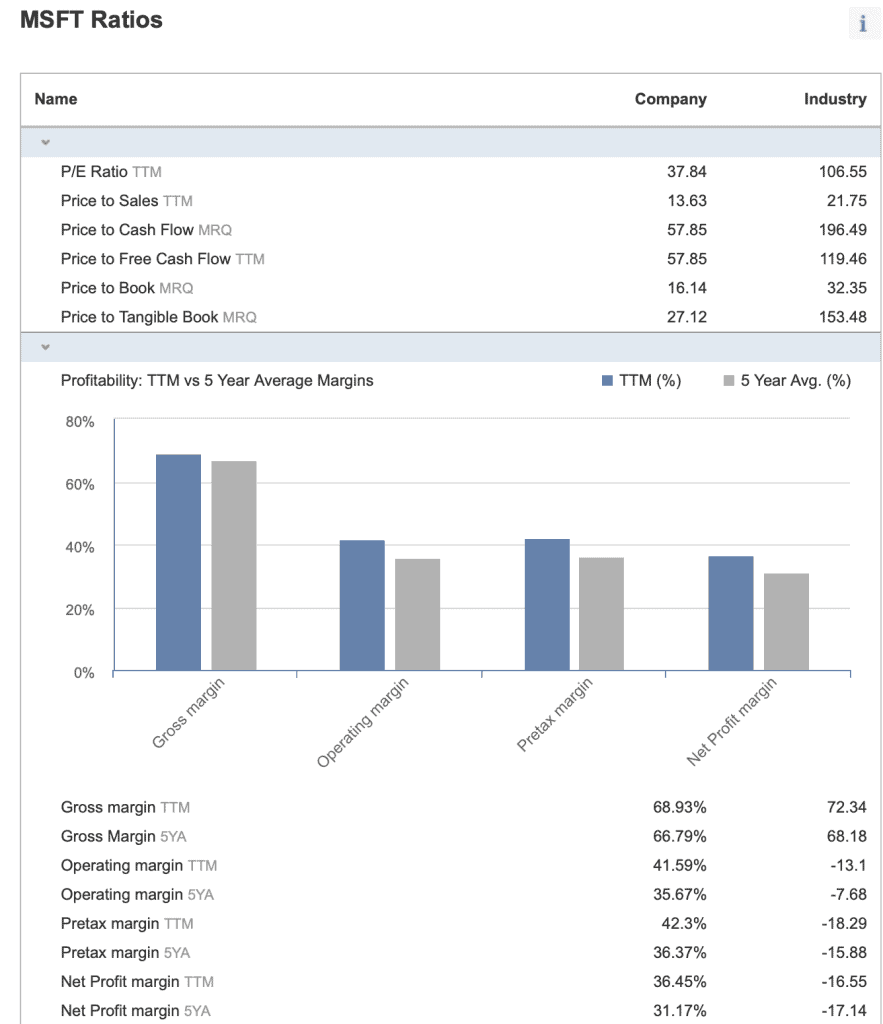
Balance sheet
It tells us how financially strong the company is, its assets and liabilities. We look at the data from the latest point in time (look at the latest quarter). We will refer to Reuters and Yahoo Finance for the data.
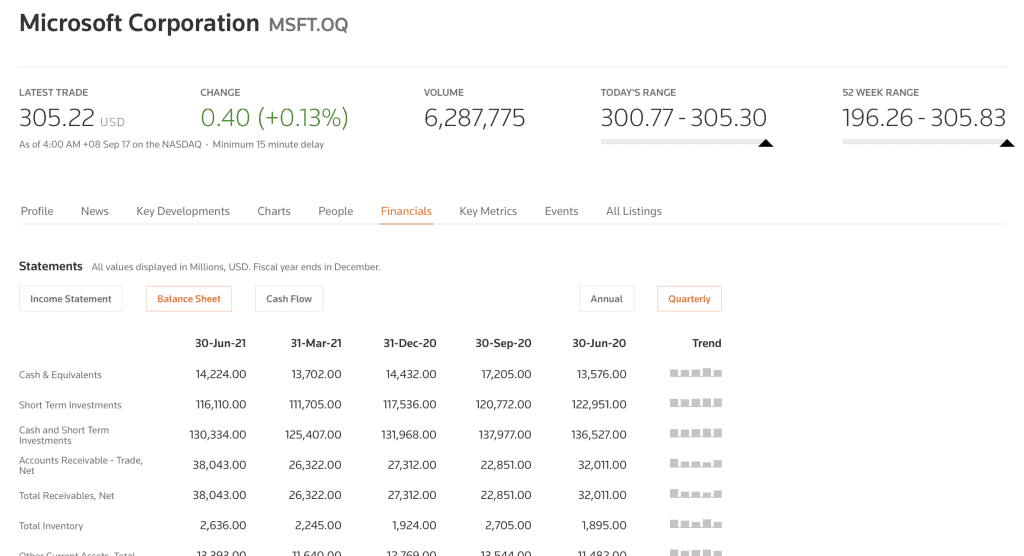
At Yahoo Finance, zoom in on the latest quarter.
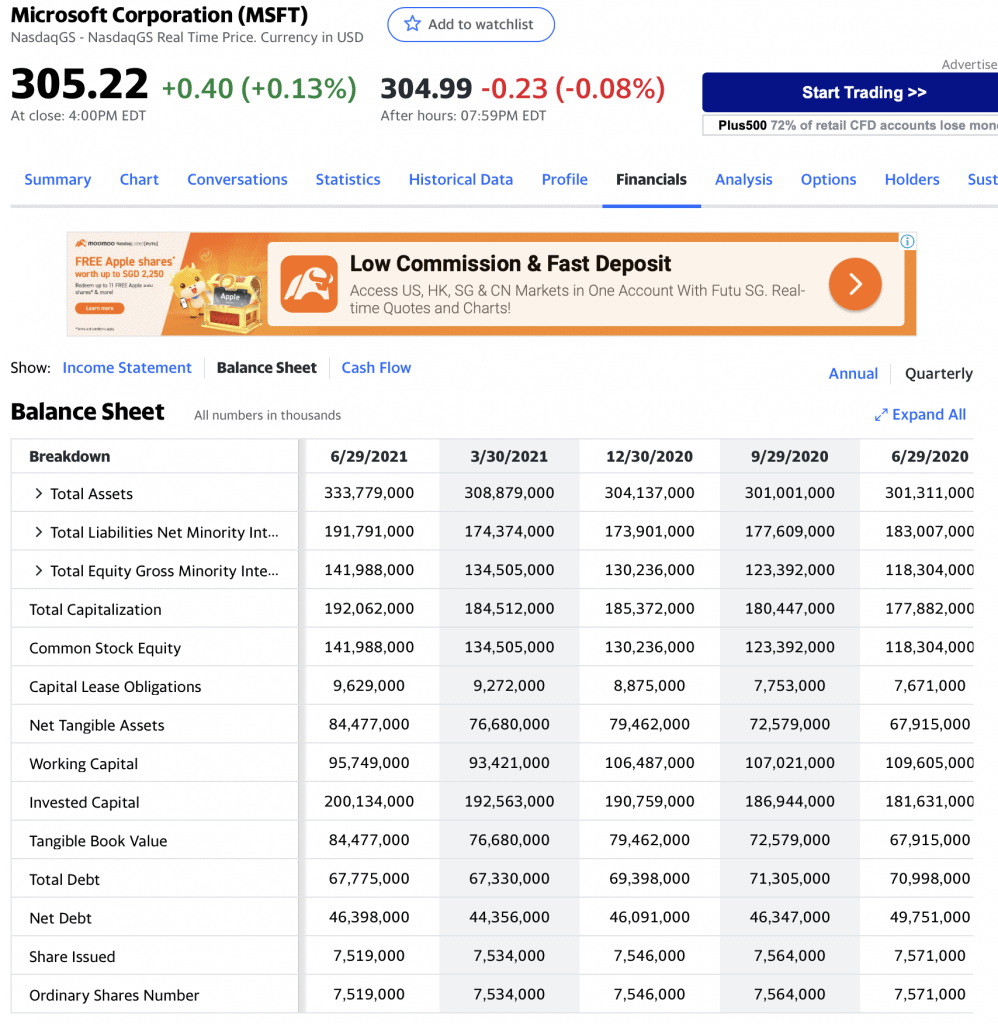
Useful Formulas to understand if a company is conservative in their debt
Current ratio = CA/CL (>1 would be good)
Debt to EBITA ratio = Total debt/EBITA (<3 would be good)
Total debt = short term + long term debt
EBITA: another type of profits before interest, taxes, depreciation and amortisation
This ratio tells us how long it takes for company to pay back its debt based on its annual profit
Debt servicing ratio = Net interest expense/Cash flow from Operations *100% (<30% would be good)
This ratio shows x% of the cash earned every year goes to pay the interest
Net interest expense: how much interest the company is paying because of the debt that it has. Also net the interest it gain
These formulas do not apply to highly leveraged companies such as banks, financial companies, property developers, Reits and commodity companies.
From Reuters (key metrics),
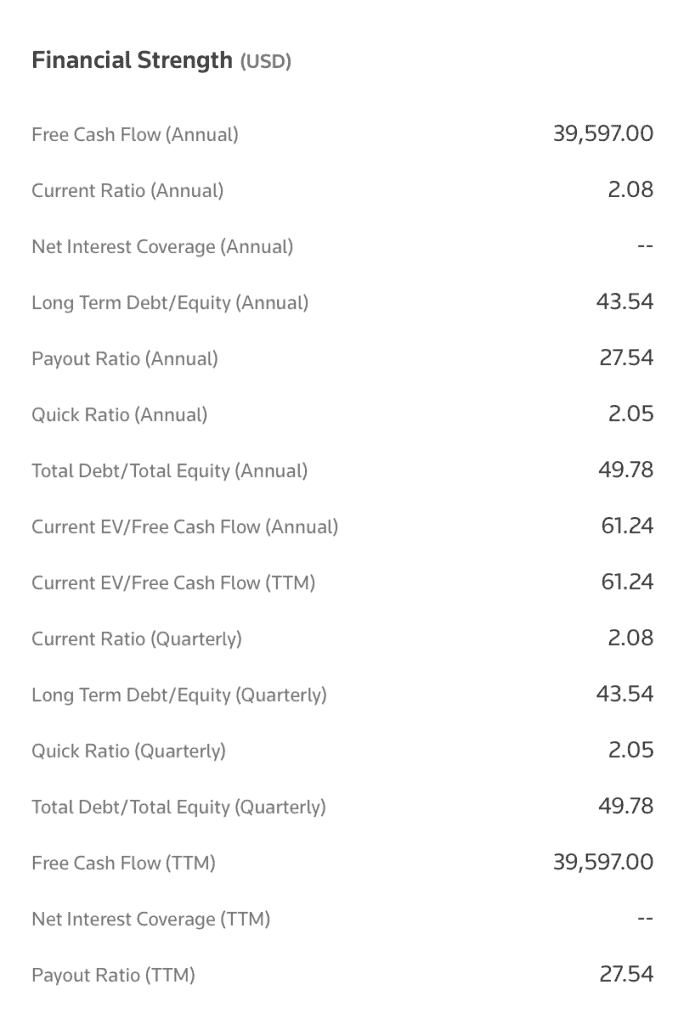
From Yahoo Finance (statistics),

From FinViz that caters to US companies only,

From Gurufocus,

It provides Debt/EBITA ratio as well.
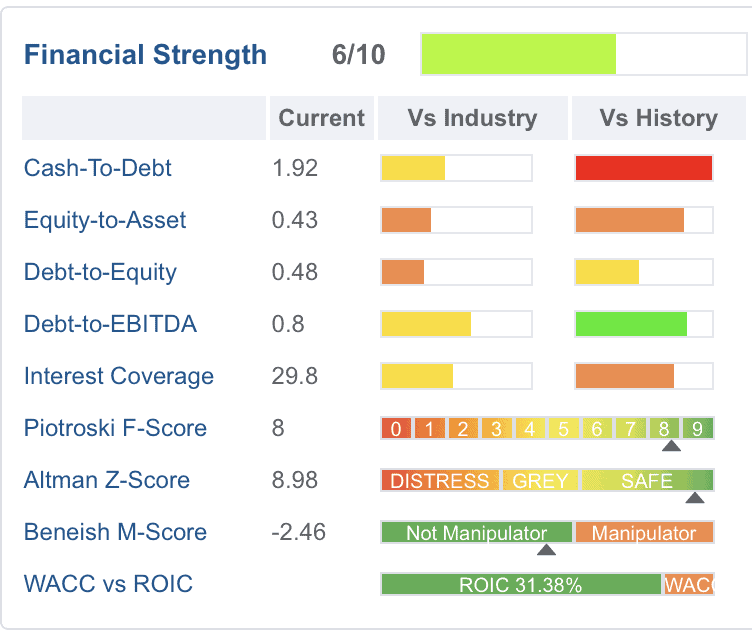
Use Yahoo Finance to do a manual calculation of debt to EBITA
Total debt = current debt + long term debt
Debt to EBITA ratio = Total debt/EBITA (<3 would be good)
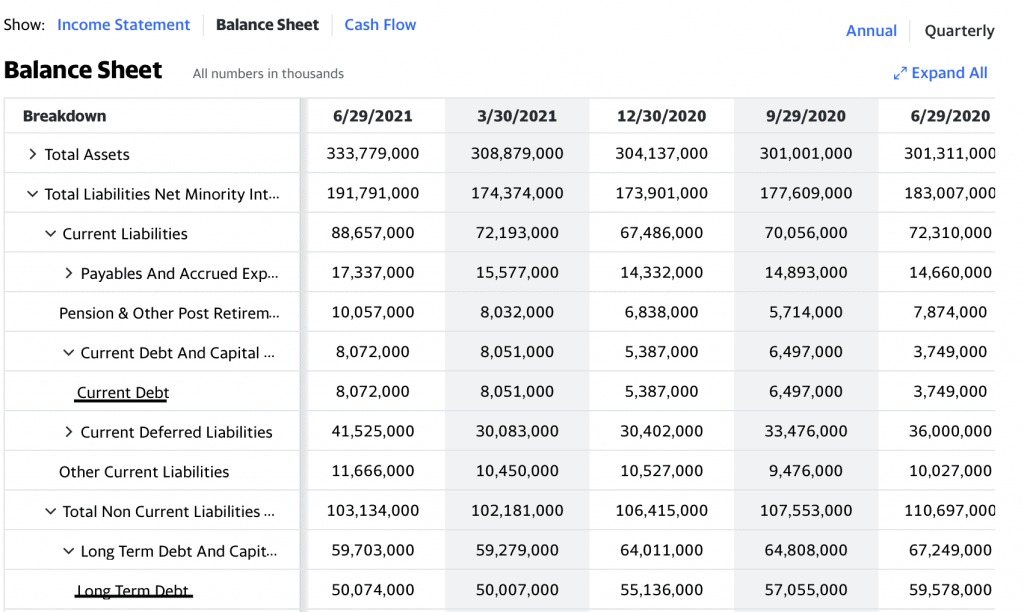
To find EBITA (a type of income), go to income statement
Income statement - view on an annual basis
Balance sheet - quarterly
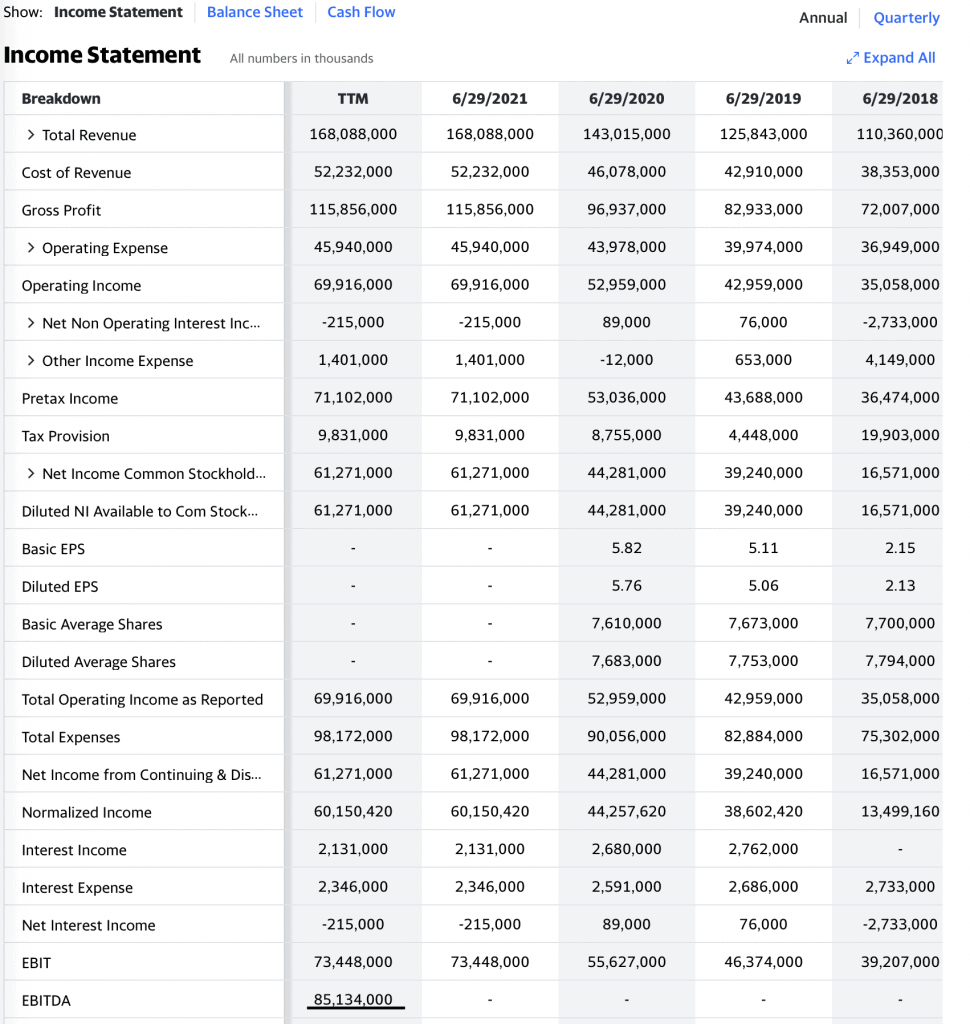
Debt servicing ratio = Net interest expense/Cash flow from Operations *100% (<30% would be good)
From Yahoo Finance, head to Financials for income statement and cash flow. Figures are taken on an annual basis.
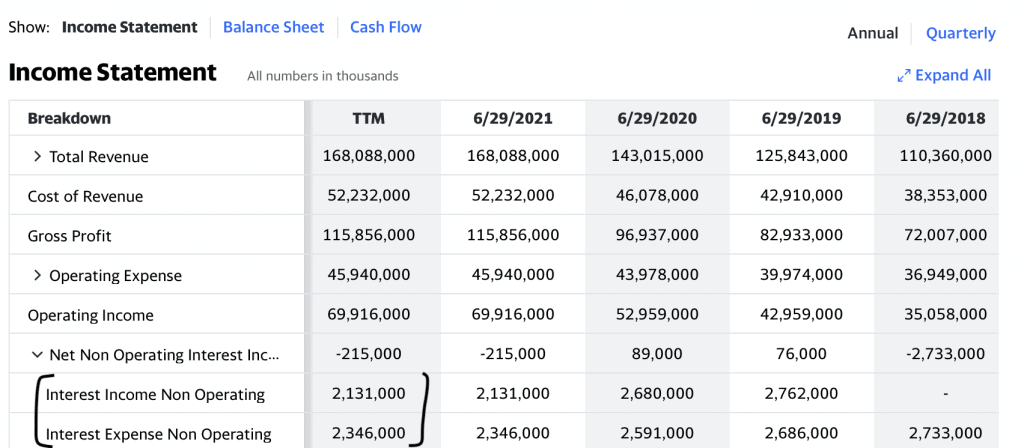

Statement of Cash Flows
| Cash Flow from Operations | Cash inflow and outflows from a company's operations. Used to calculate intrinsic value | Invest in companies with positive & increasing cash flow from operations. Banks, commodity and property developers have inconsistent cash flow from operations |
| Cash Flow from Investing | Cash inflow and outflows from a company's investment activities | Inflow: selling of assets, equipments and investments Outflow: buying assets and equipment (capital expenditure) |
| Cash Flow from Financing | Inflow: borrowing money, selling shares to raise money Outflow: paying back loans, share buybacks |
Shares get diluted when companies sell new shares to generate more cash (outstanding shares will increase accordingly). Each share is worth less because you need to share the company's profits with more people.
Net Income (annual total profit) /Shares = earnings per share
- =1 means for every share you own, you get a dollar in profit
If the increase in Net Income is more than the increase in outstanding shares, it is not a concern.
A Share Buyback is good if company is doing well and current share price is undervalued
For Cash flow figures, you can use Yahoo Finance, Reuters and Guru Focus.
Reuters: Financials - Cash Flow (annual)
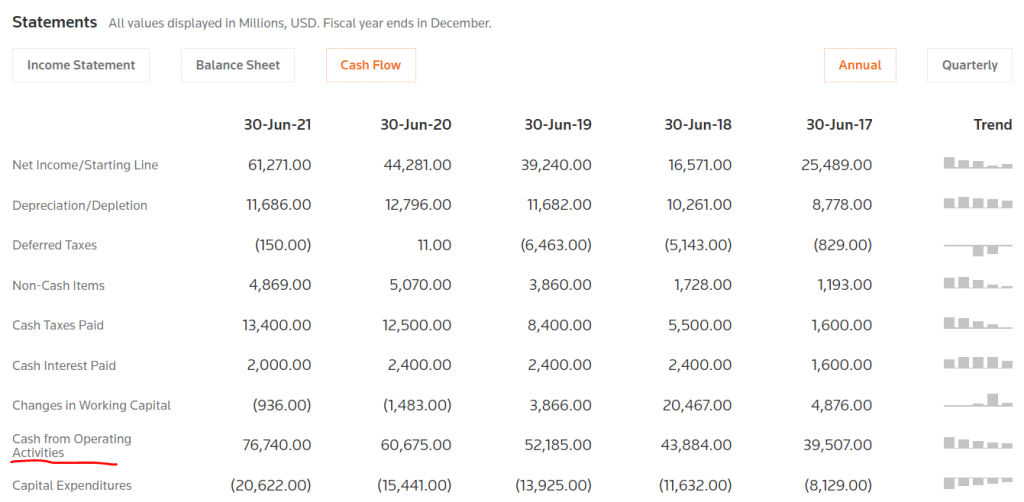
When Cash from Investing activities is negative, it means that money is going out from investments.
When Cash from Investing activities is negative, it means that cash is used to buy back shares or pay back bank loans etc.
From Yahoo Finance, you can get the data including Free Cash Flow.
Free Cash Flow = Cash Flow from operations - Capital expenditure from investing
It is best if it's positive and rising every year. We will be concerned if it is negative for too any years, as the company will run out of cash and have borrow more by issuing shares etc.

From Guru Focus, we have a chart for these Cash Flow figures.

Financial ratios
Earnings per share (EPS)
- Net profit (after tax) earned per share of stock.
- Net profit after tax/ total shares outstanding
- Can be increased by either an increase in net profits and/or decrease in shares outstanding by Share Buybacks
Price to Earnings Ratio (P/E)
- Current share price/ earnings per share (EPS)
- You are paying x times for every dollar of earnings
You can get EPS and P/E ratio from FinViz. Useful indicators: Income, EPS (ttm), P/E and Shs outstanding
Return on Equity (ROE)
- Net profit after tax/ Total Shareholder's equity
- High ROE shows that the company is efficient at making money
- ROE > 12-15% is good
- We want to see consistent and high ROE over the last 5 years
You can head to Reuters to get ROE data under Key Metrics - Refer to Return on Average Equity (Annual) and Return on Average Equity (5Y) for 5 year negative
Possible reason why ROE is negative even net income is positive is because of L>A (so shareholder equity is negative). This happens when they do share buybacks so this will reduce cash (asset) and shares outstanding. Also take advantage of low interest rate for a loan for share buyback.
To screen for companies with good fundamentals, use Finviz (screener and chart)
Criteria
- EPS growth next 5 years: over 10%
- ROE: over 10%
- Sales growth past 5 years: positive or over 10% if you are stricter
- EPS growth this year: positive
- Current ratio: more than 1
- EPS growth next year: positive
- EPS growth past 5 years: over 10%
Thank you for reading my post! Please feel free to connect with me and get updated posts on Facebook.







